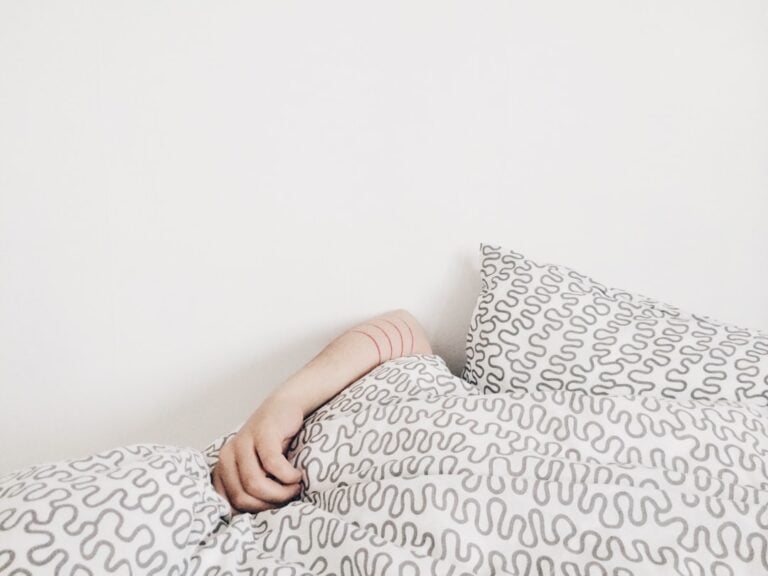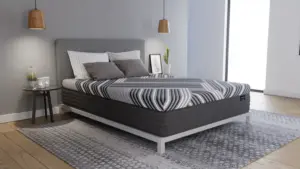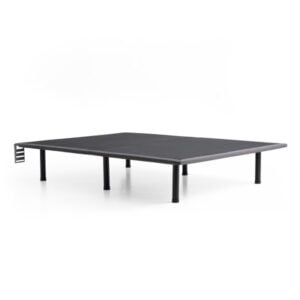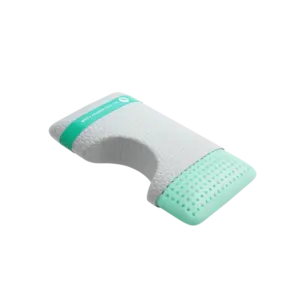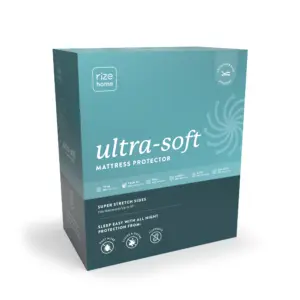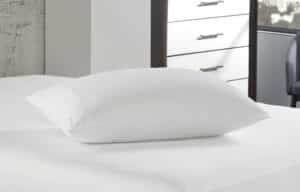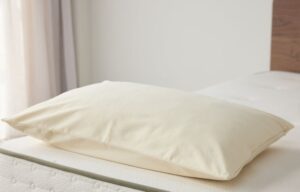What is Sleep Apnea? Everything You Need to Know
Sleep apnea is a serious sleep disorder characterized by repeated interruptions in breathing during sleep. Understanding this condition is crucial, especially if you’re experiencing restless nights and feeling unrefreshed upon waking.
Quick Facts About Sleep Apnea
– Sleep Disorder: Sleep apnea interrupts your sleep cycles, preventing you from reaching restorative stages of sleep.
– Breathing Interruptions: Your airway may become blocked, or your brain might fail to signal your muscles to breathe effectively.
– Oxygen Depletion: Each episode of apnea decreases your blood oxygen levels, posing health risks.
– Restless Sleep: These interruptions often force you awake to catch your breath, leading to fragmented and restless sleep.
In essence, sleep apnea can prevent you from obtaining the restful sleep needed for overall health. There are two primary types: obstructive sleep apnea (OSA), caused by physical blockages in the airway, and central sleep apnea (CSA), which stems from signal issues in the brain. If left untreated, sleep apnea can lead to serious health complications ranging from heart issues to daytime fatigue.
Types of Sleep Apnea
Obstructive Sleep Apnea (OSA)
Make no mistake: OSA is the most prevalent form of sleep apnea. It occurs when the muscles in the back of your throat overly relax, causing a blockage in your airway. This blockage leads to difficulties in getting sufficient air into your lungs and may result in loud snoring, choking, or gasping for air. Such episodes can happen multiple times an hour, disrupting your sleep and diminishing oxygen levels in your blood. Over time, untreated OSA may contribute to high blood pressure, heart disease, and stroke.
Central Sleep Apnea (CSA)
Less commonly, CSA arises when the brain fails to send proper signals to the respiratory muscles. This condition can result from underlying issues like heart failure or neurological disorders. Individuals with CSA might experience sudden breathing stops, leading to frequent awakenings throughout the night. Unlike OSA, CSA is less frequently associated with snoring, making detection more difficult without a sleep study.
Complex Sleep Apnea
Complex sleep apnea, or treatment-emergent central sleep apnea, combines elements of both OSA and CSA. This can complicate treatment options and may necessitate a more tailored approach that addresses both obstructive and central components.
Causes and Risk Factors of Sleep Apnea
Causes of Obstructive Sleep Apnea
OSA develops primarily when the throat muscles relax extensively during sleep, leading to soft tissue collapse in the throat that blocks the airway. Common causes include:
– Soft Tissue Collapse: Relaxation of throat muscles can cause the soft palate and uvula to obstruct airflow.
– Enlarged Tonsils or Adenoids: Especially in children, these can significantly block the airway.
– Muscle Relaxation: Excessive relaxation of the muscles supporting the soft palate and tongue can narrow the airway.
Causes of Central Sleep Apnea
CSA differs in that it primarily results from the brain’s failure to signal breathing muscles correctly. Key causes include:
– Brain Stem Issues: Problems in the brain stem, which regulates breathing, can disrupt normal patterns.
– Hormonal Imbalances: Conditions like hypothyroidism can impact the brain’s regulation of breathing.
– Opioid Use: Chronic opioid medications can depress the respiratory system, leading to CSA.
Risk Factors for Sleep Apnea
Understanding your risk can aid in prevention. Key risk factors include:
– Obesity: Excess weight can lead to fat deposits around the airway, contributing to blockage.
– Older Age: The risk increases with age, particularly after 60.
– Male Gender: Men are generally more prone to developing sleep apnea than women.
– High Blood Pressure and Diabetes: Both conditions are frequently associated with sleep apnea.
– Genetics and Family History: A family history of sleep apnea can increase your risk.
– Lifestyle Factors: Smoking, excessive alcohol consumption, and chronic nasal congestions increase the likelihood of developing OSA.
Recognizing these causes and risk factors enables proactive measures for risk reduction. If you’re concerned about sleep apnea, it’s essential to seek a healthcare provider for further evaluation.
Symptoms of Sleep Apnea
In Adults
Common signs of sleep apnea include:
– Loud Snoring: Not just a nuisance; loud snoring can indicate partial airway blockage.
– Daytime Sleepiness: Experiencing excessive tiredness even after a full night’s sleep is a strong warning sign.
– Gasping for Air: Waking up suddenly with a choking sensation can signal sleep interruptions.
– Morning Headaches: Frequent headaches can relate to low oxygen levels during sleep.
– Mood Changes: Increased irritability, anxiety, or depression may be linked to poor sleep quality.
In Women
While women may exhibit some similar symptoms, they often manifest differently. For instance:
– Less Snoring: Women may snore less loudly, complicating diagnosis.
– Emotional Symptoms: Anxiety and depression may be more pronounced in women.
– Difficulty Sleeping: Insomnia is frequently reported, contributing to chronic fatigue.
In Children
Symptoms can differ in children, making detection challenging:
– Hyperactivity: Instead of tiredness, children may present as hyperactive.
– Poor Academic Performance: Struggles with focus can indicate sleep disturbances.
– Abnormal Sleeping Positions: Unusual sleeping postures may be observed alongside loud snoring or mouth breathing.
Recognizing these symptoms can lead to early diagnosis and better management of sleep apnea, improving overall quality of life.
Diagnosis of Sleep Apnea
Sleep Studies
Accurate diagnosis often involves a sleep study, which can take place in a clinic or your own home.
##### Overnight Study or Polysomnogram
This requires spending a night in a sleep clinic, where sensors will monitor:
– Breathing patterns
– Blood oxygen levels
– Heart rate
– Brain activity
A trained sleep technologist oversees this comprehensive study, gathering critical data for diagnosis.
##### Home Testing
An alternative, less comprehensive option involves wearing a monitor at home. This test tracks breathing patterns, oxygen levels, and heart rate, providing useful insights into your sleep health.
If your healthcare provider suspects sleep apnea, they may refer you to a sleep specialist. Understanding your breathing patterns and sleep behavior is crucial for an accurate diagnosis and effective treatment plan.
Treatment Options for Sleep Apnea
Upon diagnosis, various treatment paths are available. These can range from lifestyle modifications to medical devices and surgical options.
Lifestyle Changes
– Weight Loss: Shedding extra pounds can significantly reduce symptoms.
– Quit Smoking: Eliminating smoking can reduce inflammation in the upper airway.
– Treating Allergies: Addressing nasal allergies can enhance breathability during sleep.
Medical Devices
– CPAP Machines: The most common treatment, CPAP machines deliver a constant stream of air to keep the airway open.
– BiPAP and Auto-PAP: These devices offer varying pressure levels and adjust automatically to breathing patterns for added comfort.
Oral Appliances
Custom-made mouth guards or tongue-retaining devices can also be effective, particularly for mild to moderate OSA.
Surgical Options
In some cases, surgery may be needed to remove excess tissue blocking the airway or to reposition the jaw. Emerging techniques like nerve stimulation may also be considered.
Complications of Untreated Sleep Apnea
Ignoring sleep apnea can lead to severe complications:
Cardiovascular Problems
Untreated sleep apnea can significantly impact cardiovascular health, leading to:
– High Blood Pressure: Frequent drops in oxygen cause a release of stress hormones, straining the heart.
– Heart Disease and Stroke: Increased risk of heart problems and strokes due to interrupted breathing and blood clots.
– Arrhythmias: Sleep apnea can cause irregular heart rhythms, exacerbating pre-existing conditions.
Daytime Fatigue
The cumulative effect of sleep disruptions leads to chronic fatigue, increasing the risks of:
– Work Accidents: Drowsiness can lead to mistakes on the job, especially in high-stakes environments.
– Driving Risks: Daytime drowsiness raises the likelihood of accidents behind the wheel.
Additional Health Risks
Sleep apnea links closely with other health issues:
– Diabetes: Increased insulin resistance is common among individuals with sleep apnea.
– Mood Disorders: Sleep deprivation may contribute to anxiety and depression.
– Liver Complications: Abnormal liver function tests can emerge alongside sleep apnea.
Frequently Asked Questions about Sleep Apnea
Can sleep apnea be cured?
While there is no definitive cure for sleep apnea, many effective treatments are available. Options vary from lifestyle changes and CPAP usage to surgical interventions, tailored to the severity and type of apnea.
What happens if sleep apnea goes untreated?
Untreated sleep apnea can lead to serious health complications, including daytime fatigue, mood changes, cardiovascular risks, and long-term conditions like diabetes.
How do you fix sleep apnea?
Addressing sleep apnea typically involves a combination of approaches. Lifestyle changes, medical devices, oral appliances, and potentially surgery all play roles in effectively managing symptoms.
Conclusion
Sleep apnea is a significant health issue that can disrupt your quality of life. From persistent daytime fatigue to life-threatening cardiovascular conditions, ignoring sleep apnea is not an option.
At Yawnder, we specialize in providing solutions to help you achieve restful sleep. Our range of products, including CPAP machines and oral appliances, are curated to meet your individual needs.
Quality sleep is vital for a healthy life, and we’re here to guide you in taking the first step toward better sleep today. Visit our Yawnder Sleep Accessories page for personalized recommendations and more information. Your journey to restful sleep starts now.

